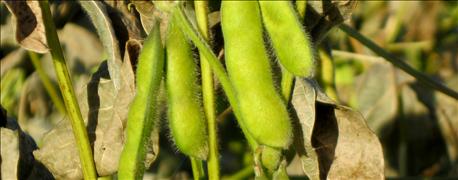June 17, 2016

North Dakota State University researchers have developed a new online computer program to help predict when soybeans grown in eastern North Dakota and northwestern Minnesota will mature.

FROST TOO SOON: Soybean pods remain green after a frost killed the leaves. A new online calculator can help you select varieties and monitor the progress they are making to maturity.
All you have to do is fill in the relative maturity of the variety, select a weather recording location near your field and enter the planting date, and the program will forecast when the variety will mature. The program will also show when you the first 36-degree-F temperature, the first frost and the first 28-degree-F temperature will likely occur, based on historic weather data. The relative maturity forecast is figured on the growing degree days (GDDs) that have accumulated to date, plus the GDDs forecast to accumulate until a killing frost.
Find the program at ndawn.ndsu.nodak.edu/soybean-growing-degree-days.html.
“The new model is just one of the many North Dakota Agricultural Weather Network online tools available to growers,” says Adnan Akyuz, North Dakota state climatologist and professor of climatological practice at NDSU.
You will be able use the program when selecting varieties. It will help you compare the risks of growing varieties with different maturities. You also will be able to use it during the growing season to predict when the crop will be safe from a killing frost.
In North Dakota, soybean varieties with a relative maturity rating of 00 are adapted for production in the most northern parts of the state, while Group 0 and the early Group 1 are adapted for the southern part of the state. Each variety is classified with a 0 to 9 decimal number following the group number. A variety designated as 0.1 could be grown in the northern part of the 0 relative maturity zone, while a 0.9 relative-maturity variety can be grown in the southern part of the 0 maturity zone.
Soybean growth stages are divided into vegetative and reproductive. “The soybean development stage with one pod on the main stem with a mature color is called ‘beginning maturity,’ or R7,” says Hans Kandel, NDSU Extension Service agronomist. “The R8 stage is defined as 95% of the pods on the plant having reached the mature color, and is called ‘full maturity.’”
Wet or dry conditions may influence how quickly the crop matures in the fall; therefore, the predicted maturity date for this model may be slightly different, depending on the late-season weather conditions.
Source: NDSU Extension
You May Also Like




